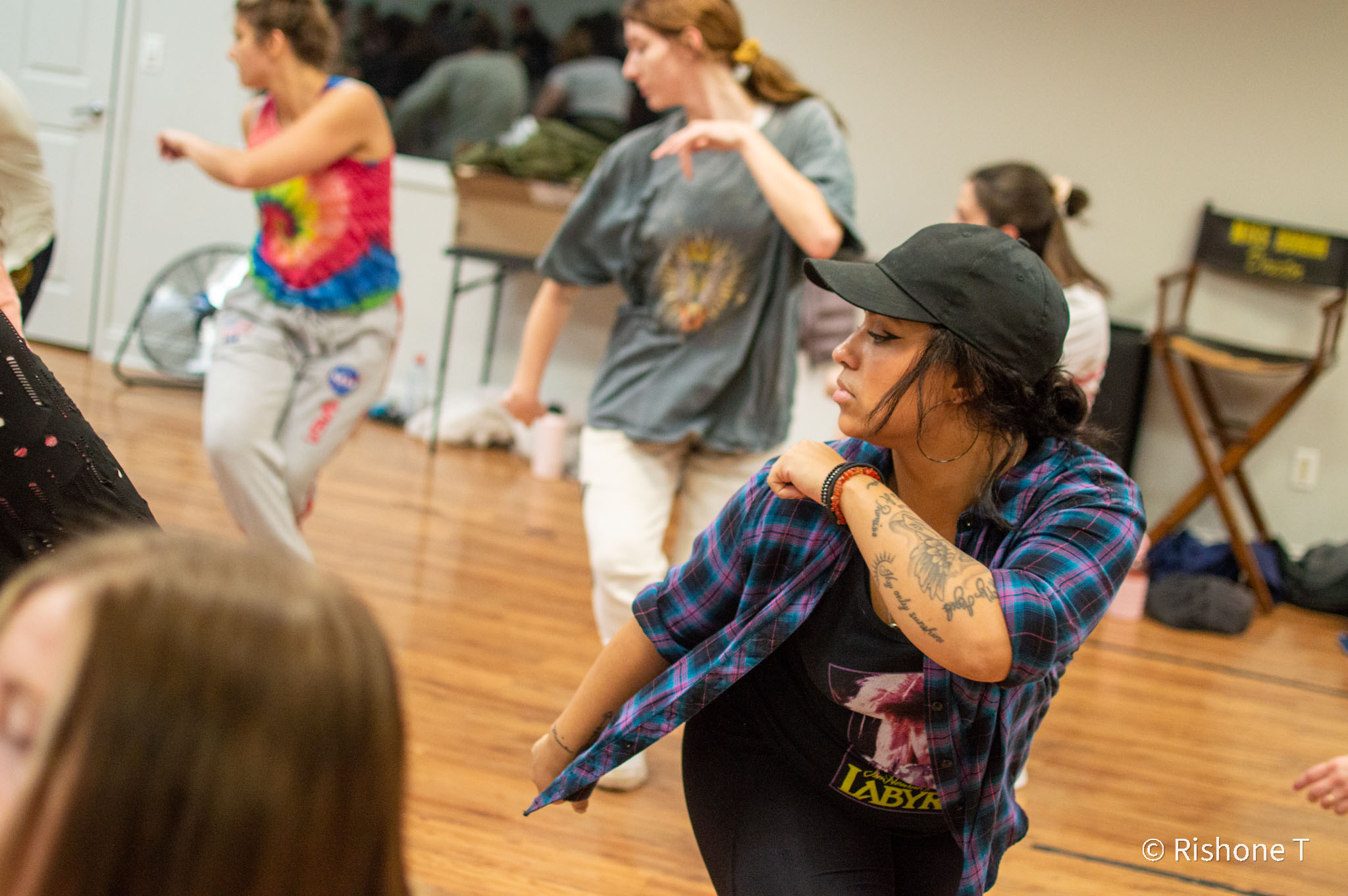
The hardest part about learning dance is trusting your movement without thinking. Thinking when learning anything new is a natural reaction but any activity that involves movement is more successful when you do it intentionally instead of thinking through it.
We have been taught to think and focus by deactivating our bodies so we can invest every ounce of our being into solving this zigsaw puzzle of movement that is bouncing around in our heads. No matter what the instructor tells us to do we have a tendency to revert back to figuring out what we are seeing with our brains instead of our bodies.
There are many activities where thinking is more efficient than the actual activity we are performing. For instance, we 100% think faster than we can speak at times and we definitely think faster than we can type. Some people can solve math problems faster than they can write it out on a chalk board. However, when it comes to dance or anything where the foundation is movement, we should always invest in doing more and thinking less.
I know this is easier said than done but dancing more or doing more and thinking less is a process. This won’t happen over night so I have a few tips to help you improve your process of becoming more of a dancer or do-er than a thinker.
First thing first, if you are learning dance, pay attention with your body and your eyes simultaneously. What does that mean? As humans, we are great at coping visuals that we see, however, most times when a visual is in motion we try to record it with our eyes as if it is going to automatically download from our brains to our bodies. Next time you are learning choreography or movement, use your eyes to see the movement as it is happening but don’t think it through, do it. Immediately use your body to copy what you are seeing to the most microscopic detail from feet to head and use your eyes to correct what you see in the mirror if it does not mirror the instructor’s movement.
Secondly, check the postion of the instructor’s feet. Are they under the hips or outside of the hips? Are their toes pointing out like a turn out, facing inward or facing forward? Are their heels lifted? Are their toes pressed into the floor? That is how detailed you should be and as you are moving you should make those adjustments and log how they feel within your body.
Additionally, after you have figured out their feet, you should then work your way up to their hips, then their torso, their hands, and finally the position of their head.
The third thing as I alluded to above is becoming familiar with how the movement feels. After you have corrected what you see, then tune in to how the movement feels. What is your core doing? Is it engaged or loose? Are you hinging are you not? Where is your weight or location of your hips, torso or upper body in relation to your feet? This has never failed me. If you can feel what you are doing then you have a very high chance of remembering the movement without using your brain. From my experience, it is the most effective way to remember choreography.
The fourth thing to employ while learning is to quiet your mind by using the sounds of rhythms, instruments, counts, or lyrics of the song the instructor is verbally sharing to get you connected to the music. It will help to drown out your own thoughts of uncertainty and will teach you to find a connection to what your are doing more efficiently.
Lastly, If you are still having trouble connecting these things after a couple times of trying and correcting, ask the instructor to clarify. That is what we are their for. I guarantee that 6 other students have a similar question that they are shy about asking or dont even know that they needed clarification. Asking a question will also help you to settle your internal frustrations and get you back on track with what you’ve learned so far.
Yes, we all have memories, some are good and others are not the best. I believe and know that some of us have the capacity to remember 16 counts of 8 without moving but if you can’t perform it physically in a dance class it is counter productive. We can’t learn choreography by just utting the puzzle together mentally, we have to actually take our bodies through the routine physically. Building a physical memory through repetitive movement and associating that movement to how you feel creates a more dependable memory in a dance class. Those methods of remembering choreography are more accessible at the speed of movement than trying to remember a series of movements with multiple transitional steps.
Taking these things and applying them in class will not happen at the snap of a finger but if you listen to your instructor(aka known as us) we echo these tips multiple times in every class. You just have to do your best to use what we are sharing to get out of your thoughts and into your body as well as your feelings. Take one class experience and apply one of these tips at a time until you gradually become less and less dependent on what you remember and more about what is happening when you are moving. It sounds complicated but it is the simplest form of learning dance that I know will help you be the dancer you’ve been waiting to see emerge when you are fully performing what you have learned. You will appreciate class experience more and most importantly you will enjoy dancing more. Now go do it. Think about it after.